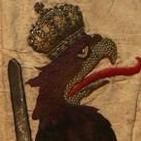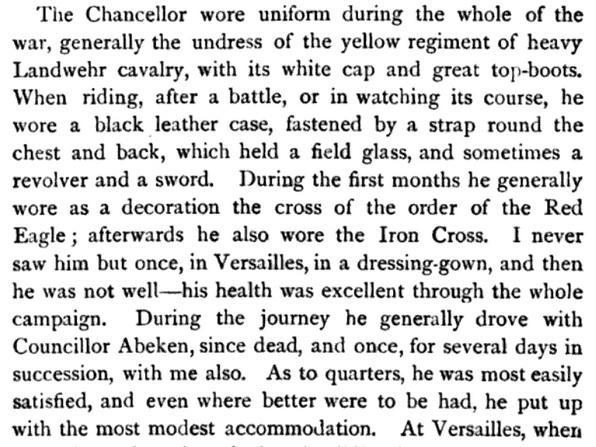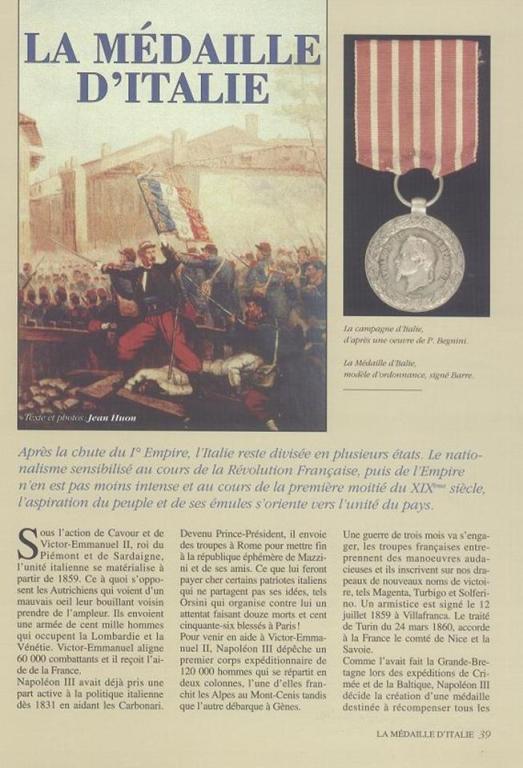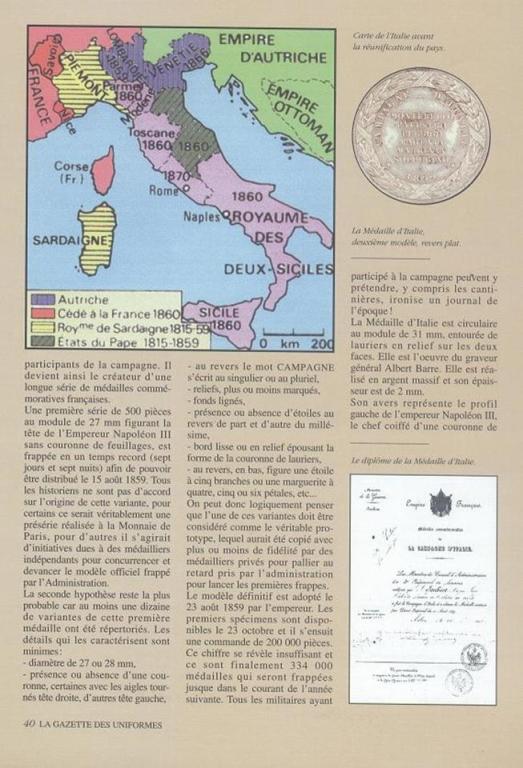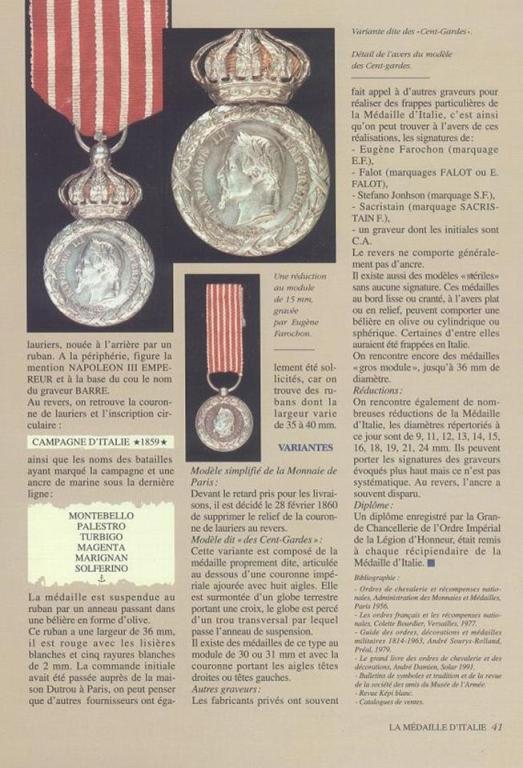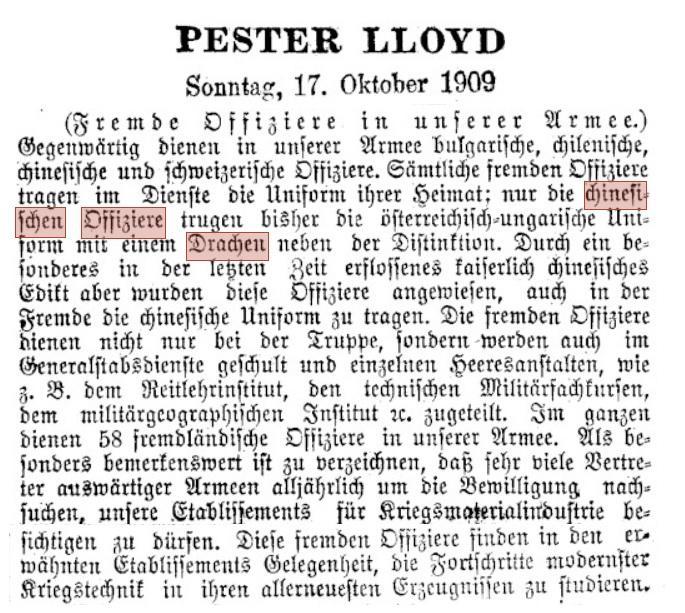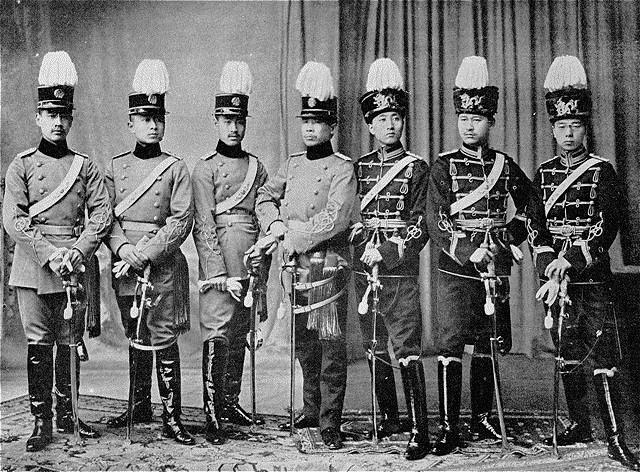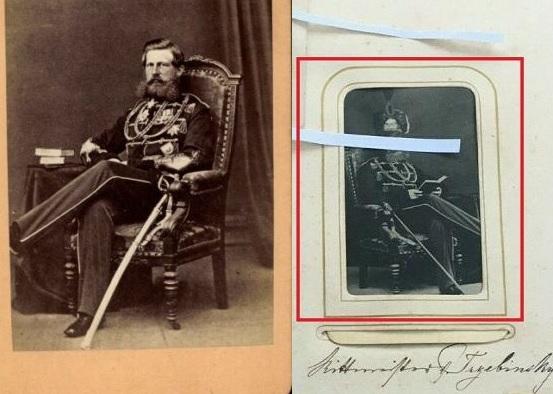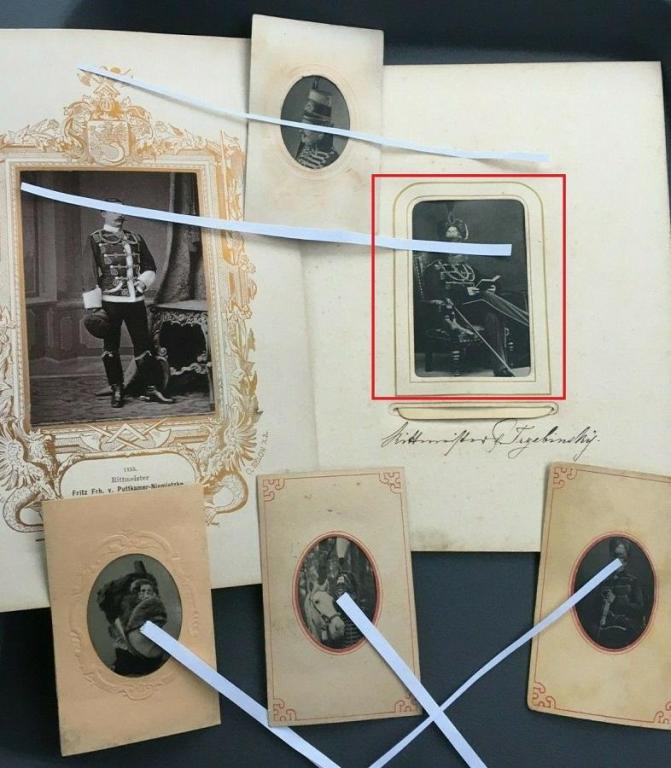
Djedj
Past Contributor-
Posts
287 -
Joined
-
Last visited
-
Days Won
2
Djedj last won the day on March 15 2021
Djedj had the most liked content!
Profile Information
-
Location
France
Djedj's Achievements
-
Not claiming to be a specialist either - but all the few Hannoverian Waterloo medals I have seen show similar fonts, and they all have this king of irregularly aligned naming. Worthy of further research !
-
Bonjour, It is a variation of the "Officier d'Etat-Major" dolman : http://military-photos.com/brevetes.htm You'll find the same unattached cords with the early Spencers of Officers from both Chasseurs d'Afrique and Spahis. Indeed typical of Douay - though I wouldn't bet the house that no other General wore similar. Bien cdlt, Jérôme
- 2 replies
-
- felix douay
- french army
-
(and 3 more)
Tagged with:
-
Bonjour Elmar, Very nice group ! WELTER was posted to the 3e Voltigeurs on 13th April 1856 - after returning from the Crimea. He had served the campaign with the 14e de Ligne (14th Line Infantry). He notably took part in the fights of the night between 23rd and 24th May 1855 (second night of bloody fighting with the Russians) : 'L'action s'engagea à la même heure que la veille. L'élan de ces braves bataillons, appartenant au 46e, eu 98e, au 14e, au 80e, fut irrésistible. Les embuscades furent tournées et enlevées ; l'ennemi, partout enfoncé, se retira en entretenant une fusillade, qui s'apaisa cependant peu à peu et qui finit par s'éteindre. Le génie put aussitôt commencer les travaux et les pousser, malgré la mitraille et les projectiles de toute nature lancés par la place." This is where he was wounded : "Blessé de petites plaies multiples à la face et à l'oeil gauche, le 24 Mai 1855, à l'attaque des embuscades Russes, devant Sébastopol, et par suite de la déflagration de la poudre d'un obus." He was also decorated with the Légion d'honneur for the same fights (ranking from 1st June 1855) : "Capitaine au 14e régiment d'infanterie de ligne ; treize ans de service effectif, deux campagnes, une blessure ; a entraîné sa compagnie avec beaucoup d'entrain et de vigueur." So - besides the Légion d'honneur, the "Sébastopol" Clasp was well earned ! The naming of the AVM matches exactly the style of another know example for the regiment. Great group ! Jerome
-
An Article from "la Gazette des uniformes" about the Italy Campaign Medal, discussing a little the Models with Crowns - but they are merely described :
-
Bonjour Graf, Nice medals ! There is no consensus among French Collector about these Medals "with Crown". But : - There is photographic evidence of Italy medals with Crown in wear on period photographs. One from my collection on a 1860 photo (full size medal) : http://www.hussards-photos.com/France/France_CDV_8_Pitois.htm A half-size model on another 1860 photo : http://www.hussards-photos.com/France/France_CDV_8_DeNiort.htm (other photos known). - The general consensus is that this fashion is an idyosincrasy by some officers (mostly) that was tolerated - so models made to look "nicer" at the request of the wearers. - The "Cent-Gardes" nickname has stuck among collectors - however all period photos I know of Cent-Gardes wearing the Italy Campaign medal show them wearing models without crown. You can see some here on this excellent website : http://military-photos.com/ http://military-photos.com/histogardecav.htm So this name of "Cent-Garde" Model has to be retained for what it is : a Collector's colloquial designation (so really "the so called Cent Gardes Model"). - With respect to Mexico and China campaign medals with Crown, they pop up now and again ... and generate a lot of speculation among French collectors ! Some crowned Medals may be modifications made at the request of the recipients - other later modifications by collectors, some very likely with an intent to deceive. I am yet to see any period photograph showing one in wear. On these ones I'll refrain from making any conclusion.. The general hypothesis among collectors is that Italy Campaign Medals with Crowns allowed wearers to have the medals better aligned with other medals worn - esp. if the Italy Campaign Medal was to sit between the much "taller" Légion d'honneur / Crimea Campaign Medal. So an aesthetic choice ; that however is a conjecture, no testimony or text describing these. I am personnally of that opinion - but acknowledge it is, at the present time, merely an "educated guess". (The added Crowns could also be some sort of political statement, showing the Emperor crowned... etc). The general consensus is that they are all "unofficial" and assembled with Crowns as private "jeweller's pieces" - therefore trying to classisfy specific Models of Crowns is a bit of a useless endeavour ; any Crown available may have been used to "enhance" the Medal. As a collector, "Caveat Emptor" - and the consistency of the patina between Medal and Crown is probably the major telltale sign to consider ? Best rgds, Jerome
-
Bonjour, There were other uniforms too. This is coming from an article in L'Illustration, published 24 June 1905 under the title "Le Péril Jaune". It places the officers as follows : "Seven Chinese Officers, who have already spent 4 years in the Wou-Chang Military Academy, started serving in Germany. 3 are attached to Field Artillery, garrisoned at Wesel, 3 other ones in a Regiment of Hussars, in Düsseldorf, and the last one in the Engineers, at Deutz." The Kürassier looks like the left one of the Hussars ? Cdlt, Jérôme
-
Bonsoir, Actually a military officer, a Commandant (Major) breveté d'Etat Major. Being posted to an Etat-Major may explain the array of foreign Orders.
-
Here is more details fro the text : " Art. 1er. - Les Alsaciens-Lorrains qui contractent pendant le cours de la guerre un engagement volontaire au titre d'un des régiments étrangers, recouvrent, sur leur demande et après la signature de leur acte d'engagement, la nationalité française. " Ils peuvent, en conséquence, être incorporés, après l'accomplissement de cette formalité, dans un corps quelconque de l'armée, s'ils remplissent les conditions d'aptitude exigées pour l'arme dont ce corps fait partie. " " Art. 2. - Le bénéfice des dispositions de l'article précédent est également applicable aux Alsaciens-Lorrains, servant dans les régiments étrangers au moment de la déclaration de guerre, qui en feront la demande." " Art. 3. - Le Gouvernement est autorisé à naturaliser sans conditions de résidence les étrangers qui contracteront un engagement pour la durée de la guerre. ". The second part of Article 1 states : "They may, consequently, be incorporated, after the completion of this formality, into any corps of the army, provided they fulfil the conditions of aptitude required." So enlisting in the Foreign Legion was a formality to get to the (automatic) next step - acquiring the French Nationality. It seems that most Alsatians were posted to some African/Colonial Corps - primarily so they would not have to fight against Germany (who would consider them traitors). For those who can read French, here is a page retracing similar fates : http://meyer.famille.free.fr/ahk/index.php?fichier=le_destin_tragique_de_pierre_gross.html
-
Bonjour, Well it is actually a technicality : your man was actually born in "Haut-Rhin", so he was born German - as in 1895, Alsace was "Reichsland". A French law from 4th August 1914 organized the admission into the Army of men from Alsace and Moselle in the same situation, as well as their "reintegration" into the French nationality : "Les Alsaciens-Lorrains qui contractent pendant le cours de la guerre un engagement volontaire au titre de l’un des régiments étrangers recouvrent, sur leur demande et après la signature de leur acte d’engagement, la nationalité française." Express granting of the French Nationality was subject to prior enlisting for the War. Of course, not being French, he could only enlist as a foreigner, before French Nationality was granted. One can understand that not all young men from Alsace-Lorraine deciding to side with France could be channeled to the same few Regiments, hence the immediate re-routing. More details here (in French) : https://www.cairn.info/revue-critique-de-droit-international-prive-2014-4-page-751.htm
-
Hi Chris, Been playing with similar ideas myself, and found myself facing the similar questions. Basically what you do not really want - is a book mostly targeting ... yourself as an audience ! ? So a trap is probably the natural desire and pleasure to showcase your favourite pieces. If your book is about the Iron Cross Diplomas - then that should be I guess your entry questions : What will Diploma Collectors be interested in ? What would be their best collecting companion ? A few suggestions : - Generalities Conditions of award (and maybe the texts) ; possibly the IC and the Bavarian Army (what it meant) - Types of Document awarded to Bavaria Troops (& other documents relted to IC awarding, in case they come with letters etc..) - Number of IC awarded along the war - Try to get an idea of Number of Documents awarded per Type - Practical info how to analyse documents - Desireability of the Document (based on a combination of raity, unit prestige, specific actions...) - ..any relevant criteria you can think of (I don't know much about that field). A lot of course depends on what compiled info you can obtain to give bigger figures. Up to you to devise a typology of Documents that suits you. I'd suggest, when coming down to the "sexy" pages of the Regiments/Units, that you include : - Bullet list of main theatres / battes / actions - Casualties of the regiment (always helping to know which ones fought "hard") - If possible, number of IC awarded (by year even better) - Maybe a "Database" of signatures found on documents, so collectors know who signed theirs ? Of course mapping out all that could be included will also help you find out all the "dead angles" where you may be missing info. Basically, if enough info is available, that should help collectors : - Understand their docs and their desireability - Brag to their fellow collectors (never to be underestimated !!) ? - Establish a collection pattern ("how can I sort them out, and what am I looking for next ?") If you want a brilliant example of how a book can be devised on a very connected topic, there has been some absolutely fantastic books on French Medal Brevet documents, prepred by Editions PBCO : http://editions.pb-co.fr/catalogueCollections.html (click on the related images, you'll get to some sample pages ; in French, but you'll see the layout, that may give you ideas for what is relevant) I am a big fan of their work ! Enjoy ! Jérôme
-
Bonjour, There are more - with a "discount" for Christmas ! ?? https://www.ebay.com/itm/6-x-Photos-Leib-Husar-Totenkopf-Leibhusaren-Danzig/373407738964?hash=item56f0d5ec54:g:h5sAAOSwlHdf6JLp Now if you look at the photo to the right (outlined in red), I'm pretty sure that the basis is a CDV of ....Kronprinz Friedrich-Wilhelm, in his uniform as Colonel en Chef of the ... Russian 11th Izyumski Hussars ! (can't find it right now, but a well-known CDV by Levitsky). Heavily doctored to add up a Prussian Pelzmütze and blacken out the cuff braiding. So - fake. (now is anyone surprised ?) Jerome (note the arrows have disappeared !)
-
Following up on this one : this CDV is coming from an early 1860s HR6 regimental album. Whereas there is no identification on the photo, the "Geschichte des Königl. Preuss. 6. Husaren-Regiments" gives us at least a "suspect" : "Gefecht von Weißenfels den 12. September. (Nota : 1813) Die Avantgarde des Corps rückte bis Weißenfels. Dieses wurde mit Anbruch des 12. angegriffen. Der zahlreiche Feind vertheidigte sich schwach und verließ um 10 Uhr die Stadt. Die Thore waren verrammelt. Husaren saßen ab und öffneten sie. Die Franzosen wurden nun herausgejagt und mit einigen Escadrons bis Freiburg lebbaft verfolgt, wobei 1 General, 1 Oberst, 16 Officiere, 1100 Mann, nebst einer beträchtlichen Bagage gefangen und erbeutet wurden (Hüttel giebt 1 General, 29 Officiere, 1254 Gefangene an). Es war dies die oben erwähnte, von v. Eicke erkundete Abtheilung. Wachtmeister Meyer des Regiments ( zur Zeit Unterofficier der 2. Esc. ), bei dieser Affaire detachirt, stand unter dem Befehl eines österreichischen Ober-Lieutenants, von dessen Commando 4 Mann gefangen wurden. Es gelang Meyer mit einigen seiner Husaren, dieselben herauszubauen, wofür derselbe auf Verwendung jenes Ober-Lieutenants die österreichische Tapferkeits-Medaille erhielt. " Meyer, who also got the EK2, was still alive in 1860. Nowhere near a definitive identification, but an interesting possibility ! Jerome


